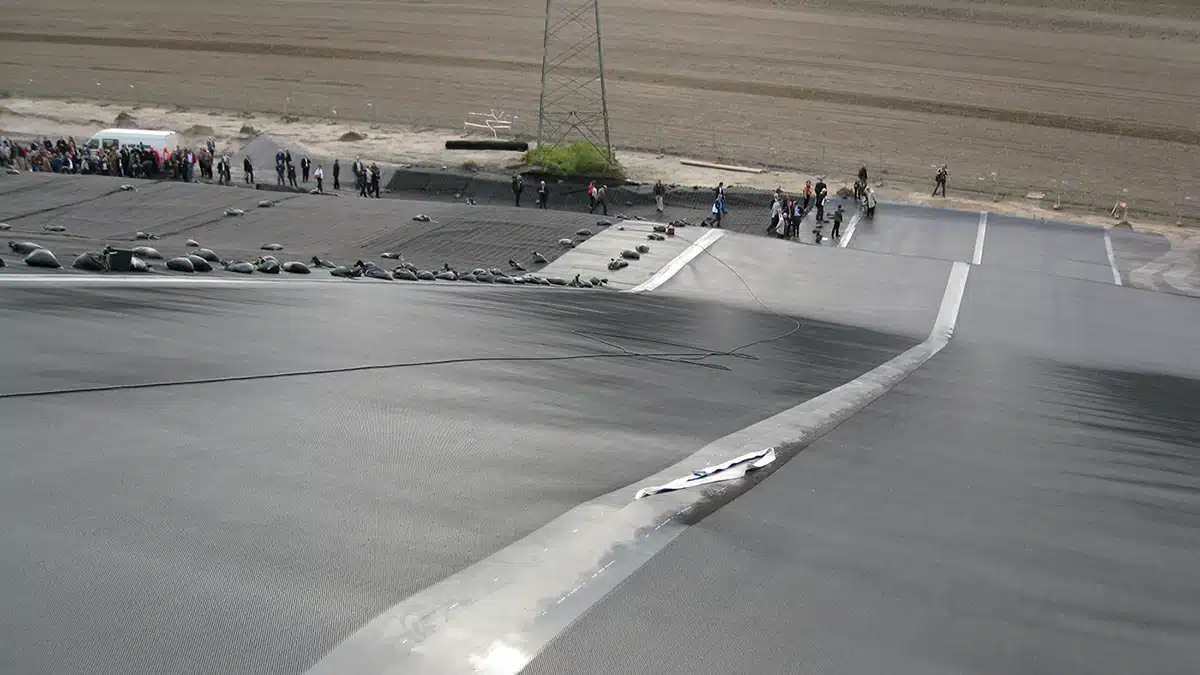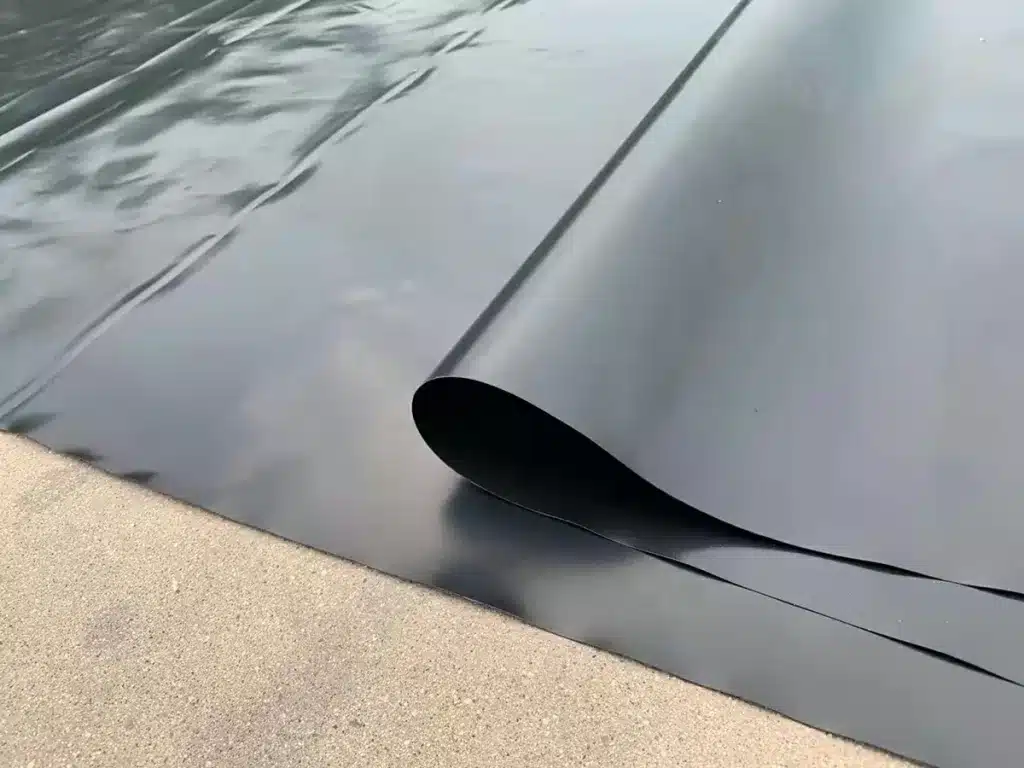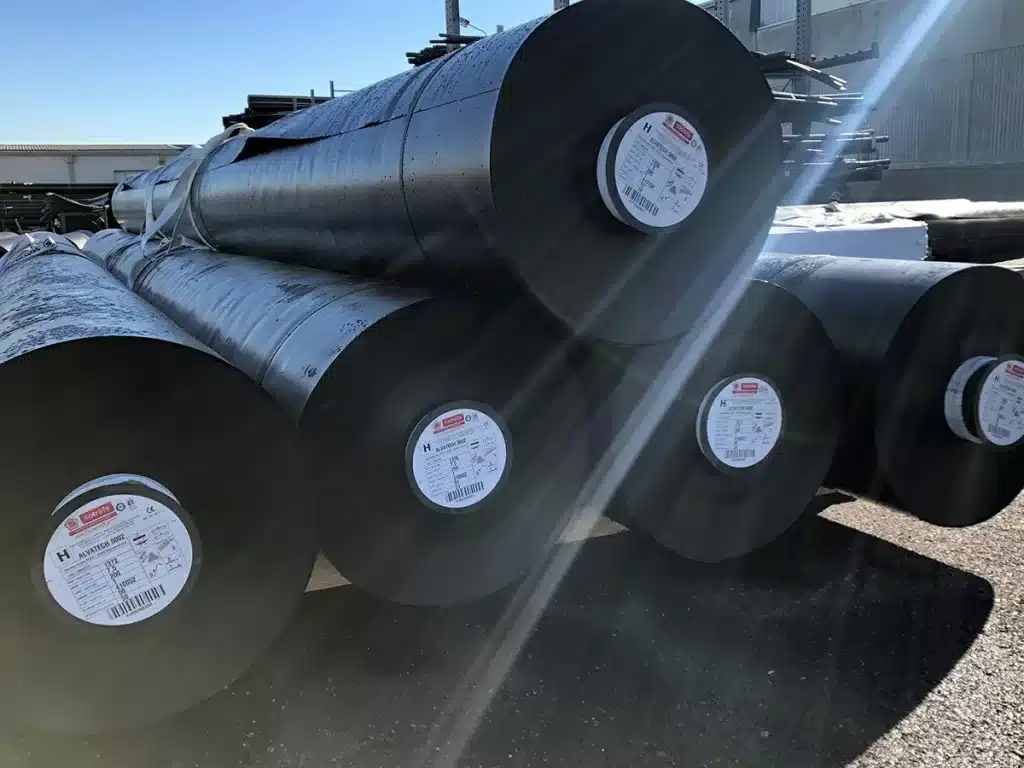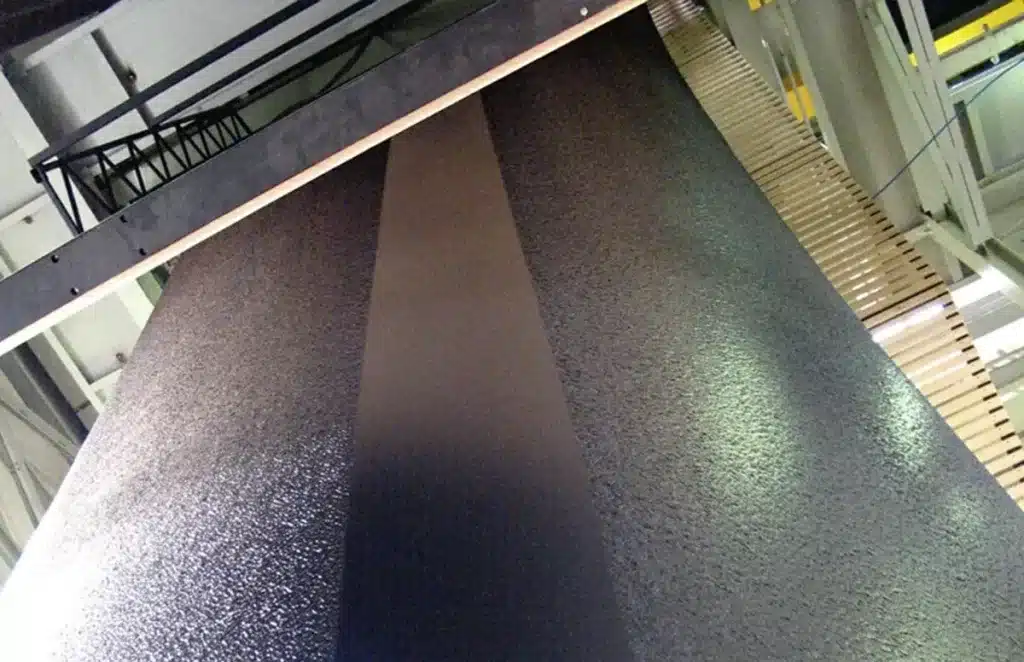+86-159 9860 6917
info@geofantex.com
geofantex@gmail.com
+86-400-8266163-44899
Geomembranes, often described as plastic sheets used within soils as a waterproof barrier, stand as the unsung heroes of the construction and engineering world. They play a pivotal role in safeguarding our environment and enhancing the durability of infrastructure projects. Crafted from thin, impermeable synthetic materials, these versatile membranes are engineered to address a wide array of challenges, ranging from water containment to waste management. This article delves into the multifaceted uses of geomembranes, exploring their applications in civil engineering, construction, and transportation systems, and highlighting the most critical aspects of their deployment in construction projects.

What are the applications of geomembranes in civil engineering?
Geomembranes have revolutionized civil engineering with their wide range of applications, extending their utility to critical infrastructure including subways, basements, tunnels, and tunnel anti-seepage linings, as well as to the stabilization of roadbeds and railway subgrades. Primarily, they are employed in environmental protection projects, such as landfill liners and caps, to prevent leachate from contaminating groundwater. In the realm of water conservation, geomembranes serve as indispensable liners for reservoirs, ponds, and canals, effectively reducing water loss due to seepage. Beyond these applications, their role is crucial in the construction of tunnels and underground structures, where they provide a waterproof barrier that protects these structures from water damage and corrosion, underscoring their importance in modern engineering and construction practices.
What is the use of geomembrane sheets in construction?
In the construction industry, geomembrane sheets are indispensable for ensuring the structural integrity and longevity of various projects, including the containment of hazardous liquids that can contaminate the ground or surrounding structures if not correctly contained. They are commonly used as vapor barriers under foundations, preventing moisture from rising into the structure and causing damage. Additionally, geomembrane sheets are utilized in roofing systems to create waterproof roofs, especially in flat and green roof constructions. Their flexibility and durability make them an excellent choice for sealing and protecting buildings from water and environmental contaminants, as well as preventing the escape of hazardous materials that could pose a risk to the environment.

What is the use of geomembrane in transportation systems?
Geomembranes play a crucial role in the development and maintenance of transportation systems, particularly to eliminate moisture from moving downward in the roadway cross-section. They are instrumental in the construction of roads, railways, and bridges, where they stabilize the soil, distribute loads evenly, and prevent erosion and water damage. Specifically, geomembranes are laid beneath roads in areas susceptible to high moisture levels, serving as a barrier to prevent the weakening of the road base due to water infiltration. This critical application not only enhances the durability of transportation infrastructure but also ensures its safety and longevity, demonstrating the essential function of geomembranes in modern engineering practices.
What is the most important aspect of construction with geomembranes?
The most important aspect of construction with geomembranes lies in their proper installation and quality control to provide a reliable and durable barrier against moisture and air movement. The effectiveness of a geomembrane as a barrier is highly dependent on its integrity, which can be compromised by poor installation techniques or material defects. Therefore, it is crucial to ensure that geomembranes are installed by skilled professionals and that the materials used meet the highest standards of quality. Regular inspection and maintenance are also essential to address any potential issues early and extend the lifespan of the geomembrane system, ensuring it continues to perform its critical function effectively.
Geomembranes are a cornerstone of modern engineering and construction, offering versatile solutions to complex challenges across various sectors. From safeguarding the environment in civil engineering projects to enhancing the durability of construction and transportation systems, the applications of geomembranes are vast and varied. However, the success of these applications hinges on meticulous installation, quality materials, and ongoing maintenance. As we continue to explore and expand the uses of geomembranes, their role in building a sustainable and resilient future becomes ever more apparent.



Get Free Sample
We’ll respond as soon as possible(within 12 hours)






















